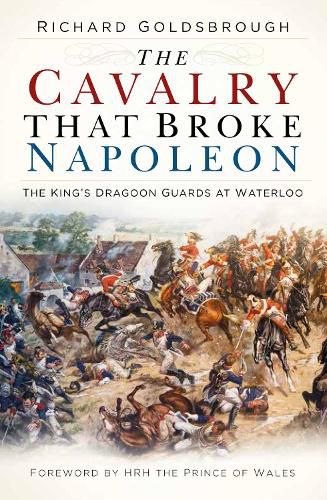Readings Newsletter
Become a Readings Member to make your shopping experience even easier.
Sign in or sign up for free!
You’re not far away from qualifying for FREE standard shipping within Australia
You’ve qualified for FREE standard shipping within Australia
The cart is loading…






On 18 June 1815, Napoleon and Wellington took to the fields of Waterloo for one final, decisive battle
a battle that would put an end to over two decades of warfare and determine the fate of Europe. Yet, little is known about the significant contribution made by the 1st or King’s Dragoon Guards who, ultimately, helped deny Napoleon victory. As a regiment, the KDG was the greatest contributor to the charge, made by the British heavy cavalry, fielding nearly half of the Household Brigade’s sabres, but it also made the biggest sacrifice. In successfully repelling the main French assault of the day it paid a heavy price: of the 540 men who bravely fought, only thirteen of its number were still standing at the close of the battle. With the regiment severely depleted at the end of the fighting, it did not make sense for the officers and sergeants to dine separately, as was the custom. So they ate together, a tradition that continues to this day, every 18 June, with the KDG’s descendant regiment 1st The Queen’s Dragoon Guards. Here, Richard Goldsbrough tells the remarkable story of the KDG before, during and after the Battle of Waterloo. AUTHOR: Richard Goldsbrough is the historical representative on the board of trustees of his former regiment, 1st the Queen s Dragoon Guards, descendants of the King’s Dragoon Guards. He is the author of a short history of 1st The Queen’s Dragoon Guards and has published articles in the Society of Army Historical Research.
40 b/w illustrations
$9.00 standard shipping within Australia
FREE standard shipping within Australia for orders over $100.00
Express & International shipping calculated at checkout
On 18 June 1815, Napoleon and Wellington took to the fields of Waterloo for one final, decisive battle
a battle that would put an end to over two decades of warfare and determine the fate of Europe. Yet, little is known about the significant contribution made by the 1st or King’s Dragoon Guards who, ultimately, helped deny Napoleon victory. As a regiment, the KDG was the greatest contributor to the charge, made by the British heavy cavalry, fielding nearly half of the Household Brigade’s sabres, but it also made the biggest sacrifice. In successfully repelling the main French assault of the day it paid a heavy price: of the 540 men who bravely fought, only thirteen of its number were still standing at the close of the battle. With the regiment severely depleted at the end of the fighting, it did not make sense for the officers and sergeants to dine separately, as was the custom. So they ate together, a tradition that continues to this day, every 18 June, with the KDG’s descendant regiment 1st The Queen’s Dragoon Guards. Here, Richard Goldsbrough tells the remarkable story of the KDG before, during and after the Battle of Waterloo. AUTHOR: Richard Goldsbrough is the historical representative on the board of trustees of his former regiment, 1st the Queen s Dragoon Guards, descendants of the King’s Dragoon Guards. He is the author of a short history of 1st The Queen’s Dragoon Guards and has published articles in the Society of Army Historical Research.
40 b/w illustrations